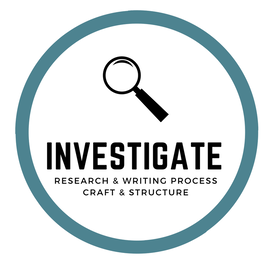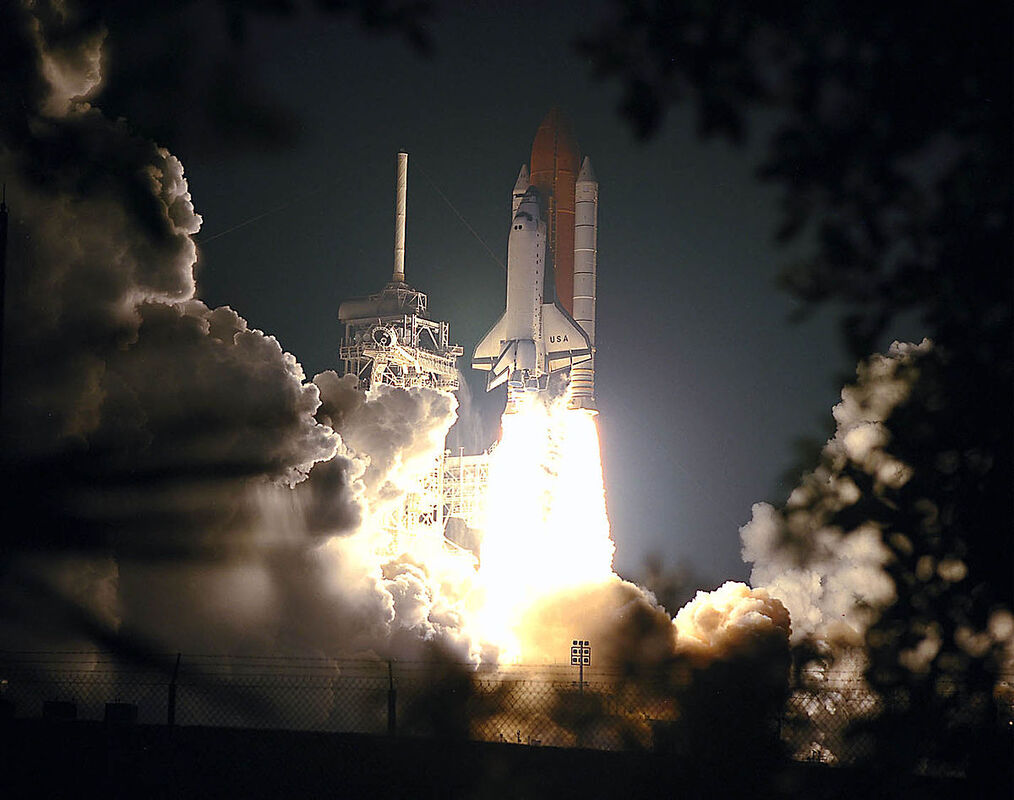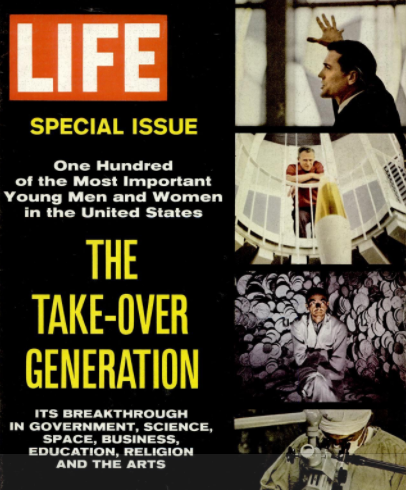|
Entry written by Xenia Hadjioannou and Erika Thulin Dawes, on behalf of The Biography Clearinghouse.
|
Research & Writing ProcessWho is Tanya Lee Stone?
|
Tanya's Process
|
|
We interviewed Tanya Lee Stone asking questions about her research and writing process for Almost Astronauts. In the recording, you can hear Tanya,
|
Craft & Structure
Blending Genres to Shape the Story You Want to Tell
|
Almost Astronauts features life stories, but it is not a traditionally organized biography or a collection of biographies. It is a story of boundary breaking: the story of how women became astronauts. This is a work of history that is highly biographical. In constructing a narrative that began with the Mercury 13 and concludes with the launch of the first Space Shuttle to be commanded by a woman, Stone has chosen to feature the life stories of the thirteen women who ‘almost’ were astronauts. This blending of the genres of historical narrative and biography is an opportunity to explore both genres with your students.
To shape the historical narrative in Almost Astronauts, Stone employs the techniques of biographers in three ways:
|
Project the following quote for students to discuss: “And for a little while, that dream placed them on the same path together. It was a path that helped shape their personal stories as well as the bigger, ongoing, living and breathing tale that is our American history” (p. 2). Ask students to share their interpretation of the quote and any examples that they can think of. How do students understand the quote to apply to the narrative in Almost Astronauts?
After sharing these examples and discussing these biographical writing techniques, have students, working in small groups, reread different chapters of Almost Astronauts in order to identify additional examples of each of these three techniques. Students can be guided to apply these techniques in their own biographical multimodal texts proposed in the Create section of this entry.
|
In Medias Res
|
Photo Credit: NASA
|
The opening scene in the book takes place in July 1999 - with some of the Mercury 13 women waiting for the lift off of the Space Shuttle Columbia commanded by Eileen Collins, the first female commander of a U.S. Spacecraft with Shuttle mission. Take off is scrapped at T minus 6. This writing technique, of beginning in the midst of the action, is referred to with the Latin phrase ‘In medias res.’ Engage your students in a discussion of this technique. What does Stone’s opening do for the reader? How did students experience this opening? Were they intrigued? Motivated to read more?
|
Have students look across the chapter openers of Almost Astronauts to find other examples of the technique: In media res. During their independent reading, have students note additional examples that they notice. Create an anchor chart or a Padlet on which students can record their examples. Encourage them to try out this technique in their own writing.
|
Exploding a Moment with Sensory Details
|
Harper (1997) reminds us that the ability to control time is a powerful authoring tool that can help enhance a story and its emotional impact. Authors can skip over significant chunks of time when they do not have much to add to the story but they can also slow down time in important moments to create suspense, explore/inject emotional depth(s), and draw the reader in to the narrated experience.
In Almost Astronauts, Tanya Lee Stone compresses time on several occasions, to be able to tell a compelling story that spans several decades and involves several people. However, she also selects pivotal moments in which she slows time down. Consider the example on page 23, when Stone describes the isolation tank testing, which begins: “You are surrounded by complete and utter darkness, pitch black.” Invite your students to discuss how this detailed description impacts the reader. Listen to the interview segment in which Stone describes her motivation for writing moments such as this, seeking to create the kinds of nonfiction texts that would have appealed to her as a child reader (17:20). She describes her process as: “thinking cinematically and kind of positioning the reader in an empathetic viewpoint.” |
Invite students to reread Almost Astronauts to find additional examples of ‘exploding the moment’ in the text. For example, they may notice this at the beginning when Cobb awaits the Shuttle launch. After noticing several examples, invite students to try out this technique. Show a short video clip of a current event (this could be a sporting event, a nature documentary, a news clip that includes video of an event unfolding) and have students ‘explode the moment’ in writing.
|
Content & Disciplinary ThinkingMultimodal Read Aloud
|
|
Chapter 1
|
Mission details for NASA STS-93, the mission referenced in the vignette that begins the book.
|
|
Chapter 3
|
Episodes of I Love Lucy, The Dick Van Dyke Show and Father Knows. Best are available through various streaming services.
|
Archival video of the multiple-axis space test inertia facility (MASTIF)
|
|
Chapter 4
|
Resources on modern astronaut selection, training and continuing research to support their health and well-being on missions. These resources can support comparisons to the 1960s as well as a discussion of inclusivity and inclusivity optics.
|
|
Chapters 5 & 6
|
NASA explains how they use full-pressure suits for high-altitude flights.
|
A video about the Dilbert Dunker, a water survival test used in phase 3 testing for astronauts.
|
|
Chapter 7
|
Astronautical and Aeronautical Events of 1962 - Report to Congress. Of particular note are the February events. These include information about John Glenn’s Friendship 7 mission (p. 18) and a single sentence regarding the First International Woman’s Space Symposium (p. 20).
|
|
Chapters 8 & 9
|
Blog Post on The Space Review by Dwayne Day discussing the Lyndon B. Johnson letter and the House hearings. It includes copies of the LBJ letter and a NASA letter about having no plans for female astronauts.
|
Video of Jerrie Cobb’s 1963 interview with the CBC.
|
|
Chapter 10
|
“One Hundred of the Most Important Men and Women in the United States,” Life Magazine. September 14, 1962, (pp. 4-9).
|
National Geographic's podcast The Glass Stratosphere
includes an interview with Sarah Gorelick Ratley, one of the Mercury 13 women. |
Mercury 13, a Netflix Documentary directed by David Sington and Heather Walsh, tells the story of the Mercury 13 through archival footage, photographs, and interviews with four of the women involved in the program. The documentary includes information about the testing, the congressional hearings, as well as the women’s lives after their participation in the program.
|
|
Chapter 11
|
"How Sally Ride Blazed a Trail for Women in Space," an article and Video about Sally Ride, the first American woman to launch into orbit. Includes reference to obstacles and sexism Ride encountered in interviews and in NASA’s awkwardness in dealing with her.
|
|
Chapter 12
|
Profiles of female astronauts Jessica Meir and Stephanie Wilson on the Artemis Team. Artemis is a currently running NASA program aiming to bring the first woman and the next man on the moon.
|
How Media and Popular Culture Reflect and Shape Social Norms
Setting a Historical Context
|
Stone references publications and TV shows across the several decades Almost Astronauts spans to demonstrate how popular media reflects and shapes norms and expectations of the roles of men and women. Beyond TV shows, Stone also makes extensive references to popular publications and their representation of gender roles and social values. See for example references to Life Magazine on pages 7-9 and 19-20 and various cartoons about women in space on pages 21, 80, and 84. Life Magazine’s catalogue is freely available through Google Books.
|
Invite students to review the two back-to-back issues of Life Magazine relating to the Mercury 7:
|
|
Evidence of gender discrimination and other prejudicial treatment are sprinkled across the book in the form of comments, experiences, publications, etc. Also scattered across the book are instances of sexism masquerading as humor even in formal government interactions (e.g. p. 46).
|
Engage students in close reading to co-create an anchor chart of such evidence and where they are found in the text, and examine how their ubiquitous presence establishes the context of how ingrained sexism was/is and how these patterns reflect, cement, and propagate it. How does this approach help us understand the historical context of these women? Why do you think Stone made this choice?
|
Interrogating the Present
|
When Jerry Cobb’s tests were made public (p. 19-20), there were many sexist responses; from infantilizing nicknames, to snide comments, to including Jerry Cobb’s measurements in articles, to cartoons ridiculing the notion of female astronauts.
When encountering historical depictions of sexism and other kinds of prejudice, their dated explicitness makes it tempting to dismiss them as a thing of the past and as no longer relevant. Women’s opportunities in various spheres of social life have grown exponentially over the decades and we now have a more nuanced understanding of gender identity and the need to combat discrimination on the basis of sex and gender. Despite progress, women and members of the LGBTQ+ community still encounter gender discrimination. In the case of women, sexism is particularly prominent for women in male-dominated spheres and women in the spotlight. Therefore, critical explorations of present-day culture are important. |
Invite students to find and bring to class popular culture artifacts exhibiting sexism and/or pushback to sexist patterns. Alternatively, teachers can bring in contemporary artifacts such as the ones listed below and invite students to read them with a social justice lens:
|
Literature Circles: Women Breaking Boundaries for Self and Others
|
As a nonfiction chapter book, Almost Astronauts is a natural fit in a text set on Women Breaking Boundaries for Self and Others. Gather a collection of chapter nonfiction books that feature women who have broken boundaries, becoming the ‘first woman’ to achieve a particular goal, feat, position or role, and women who have advocated for women’s rights. Create a Literature Circles experience for your students, allowing students to select the chapter book or longform book that best matches their interests.
|
As students read their chosen titles with their group members, ask them to make notes about their ideas, their new learning, their questions, and their connections. If you have carried out any of the craft and structure teaching ideas above, have students notice examples of In Medias Res, Exploding the Moment (Harper, 1997), and biographical techniques. Group members can also discuss how the author draws on media and popular culture to help build historical and sociopolitical context. When students have completed their chapter book, ask them to create a response project to share their book with classmates. Response projects might include a slide presentation, a dramatic performance, a visual collage, a multimedia presentation, etc. Their project should include their subject(s)’ early experiences, mentors, challenges, turning points, accomplishments, and historical context.
|
Beyond Almost Astronauts, books to consider for this text set include:
- Voice of Freedom: Fanny Lou Hamer: Spirit of the Civil Rights Movement by Carole Boston Weatherford (Candlewick 2015) (longform picture book)
- Claudette Colvin: Twice Toward Justice by Phillip Hoose (Farrar Straus Giroux 2011)
- I am Malala: How One Girl Stood Up For Education and Changed the World by Malala Yousafzai (Little Brown 2015)
- Dissenter On the Bench : Ruth Bader Ginsburg's Life and Work by Victoria Ortiz (Clarion 2019)
- Hidden Figures: The American Dream and the Untold Story of the Black Women Mathematicians Who Helped Win the Space Race by Margot Lee Shetterly (Harper Collins 2016)
- Finish the Fight!: The Brave and Revolutionary Women Who Fought For the Right to Vote by Monica Ahanonu (Houghton Mifflin Harcourt 2020)
- Sally Ride: A Photobiography of America's Pioneering Woman in Space by Tam E. O’Shaughnessy (Roaring Brook Press 2015)
- Fly Girls: The Daring American Women Pilots Who Helped Win WWII by P. O'Connell Pearson (Simon & Schuster 2018)
Author Study - "Strong Women and Girls" across Tanya Lee Stone's Work
|
Tanya Lee Stone has written several works that explore women’s rights, focusing on boundary breaking and biography. Her books that focus on strong women and girls include: Almost Astronauts (Candlewick 2009), Who Says Women Can’t Be Doctors?: The Story of Elizabeth Blackwell (Holt 2013), Who Says Women Can’t Be Computer Programmers?: The Story of Ada Lovelace (Holt 2018), Girl Rising: Changing the World One Girl at a Time (Wendy Lamb 2027), Amelia Earhart (DK Publishing 2007), Up Close: Ella Fitzgerald (Viking 2008), The House That Jane Built: A Story About Jane Adams (Holt 2015), Elizabeth Leads the Way: Elizabeth Cady Stanton and the Right to Vote (Holt 2008), and The Good, The Bad, and the Barbie (Viking 2010).
Resources:
|
Conduct an author study of Tanya Lee Stone using these titles. Invite students to select a title to read that is well matched to their reading abilities. As a whole class, watch the interview we conducted with Stone, review her website, and browse some of the additional resources for author study listed below. As you and your students learn more about Stone and these nonfiction texts, consider these key questions.
|
Social & Emotional Learning
Social Construction of Archetypes
|
Stone begins Chapter 2 by setting the space-race context of 1960 and noting that the seven men selected for the Mercury program, the program for NASA’s first manned orbit mission, were hailed as American heroes. She then briefly describes the cover of the September 14, 1959 Life Magazine featuring the Mercury 7. “This is what bravery looked like,” Stone remarks (p. 7).
|
Ask students to describe the vision of bravery captured in and promoted by the Life cover and article. Encourage them to consider voices, experiences and/or perspectives marginalized by that vision of bravery. To expand their thinking, students can draw or photograph one or more alternative images of bravery.
|
Identifying and Deconstructing Limiting Stereotypes
|
As the decades progress in the book, Stone mentions how popular shows depict women and their roles, connecting the social mores they reflect to the experiences of aspiring female astronauts. She begins with shows from the late ‘50s and early ‘60s like Father Knows Best and The Dick Van Dyke Show (p. 27-29), continues with shows from the ‘70s like Mary Tyler Moore and One Day at a Time (p. 95-96), and concludes with shows on TV in 1999, including Murphy Brown and Cagney and Lacey (p. 101).
|
Many of these shows are readily available through streaming services. Students can sample episodes from one or more shows mentioned for each era and critically analyze:
Students can also be invited to critically analyze representations in popular modern TV shows. What are their blindspots? What are future generations likely to find objectionable? |
New Texts & ArtifactsBlending History and BiographyAlmost Astronauts blurs the genre boundaries between history and biography. Drawing on the life stories of the Mercury 13, Tanya Lee Stone crafts a narrative of women’s entry in the United States space program. After completing the activity described in Craft & Structure: Blending Genres to Shape the Story You Want to Tell, students can emulate Stone’s technique, incorporating elements of biography to enhance a narrative about a contemporary event. This event could be selected by the teacher to align with a curriculum unit or collaboratively selected by the students based on interest and relevancy.
|
|
If you have 1-2 hours . . .
Provide students with a curated set of resources to explore the contemporary event. Select resources that include information about key people involved in the event. Students can use a three column chart to record their learning; column headings will be:
|
If you have 1-2 days . . .
After learning about the Mercury 13, Tanya Lee Stone experimented with different ideas of how she would tell their story. One of her initial efforts involved writing a poem about each of the women. She has shared these poems on Candlewick’s web pages for Almost Astronauts. Using Tanya’s poems as inspiration, students can select a key figure from the event you are focusing on and can compose an original poem from this person’s perspective. As students draft the poem, they should make deliberate connections between the resources they have explored to learn more about the person and the event and the perspective that they express in the poem.
|
If you have 1-2 weeks . . .
For a more lengthy project, students can build from their investigation of key figures to compose a co-authored narrative of the event. Students could work on this in several different ways - groups of students could be responsible for time segments, together creating a timeline of events; groups of students could each represent different perspectives on the event and narrate the event from that perspective; or the event could be organized by sub-events. Encourage students to use biographical techniques to enhance the narrative they are shaping.
|
Multimodal Multigenre Biographies
When researching the story of the Mercury 13 women, Tanya Lee Stone used an array of multimodal primary and secondary sources, which are listed at the back of the book. Almost Astronauts is replete with photographs, descriptions of images and events, and transcripts of interactions that reproduce or explicitly reference those sources. In the Multimodal Read Aloud section above, you will note that we have curated a list of multimodal resources to open up the world of the book for classroom communities and support an immersive, multimodal engagement with it.
In this time-gradated recommendation, students have the opportunity to engage in biography research and experiment with biography composition through a multimodal, multigenre approach.
In this time-gradated recommendation, students have the opportunity to engage in biography research and experiment with biography composition through a multimodal, multigenre approach.
|
If you have 1-2 hours . . .
Working in pairs or a small group, students select a contemporary or historical figure whose life fascinates them. Using a set of school-approved sources, have students compile a collection of links and other resources that represent the life story of their subject. Invite students to create a virtual biography exhibit through a gallery board platform (e.g. Padlet) for the figure they chose. The exhibit should be purposefully curated and annotated or captioned to tell the life story of their subject and emphasize the characteristics that intrigue them.
|
If you have 1-2 days . . .
Building on the collection of resources they have developed for the virtual biography exhibit, have students in their pairs or small groups create a Pecha Kucha style presentation (a presentation featuring 20 images/slides appearing on the screen for 20 seconds each). View this short video tutorial to get going.
|
If you have 1-2 weeks . . .
Have students use their virtual biography exhibit as the basis for producing a biographical documentary of their chosen subject that incorporates primary source documents, artifacts, photos, video, etc. and multiple pieces in different genres and modalities (written language, visual, audio, video). Depending on the technology affordances of your setting and your students’ experience with video editing, the biographical documentary can be created using such tools as iMovie, a PowerPoint presentation narrated and exported as a video file, or a recorded Zoom session using screen share. There also are several free video editing apps students can utilize. Teaching students how to cite their resources would be a vital component of this project.
|
Hadjioannou, X., & Thulin Dawes, E. (2021). Eleanor Makes Her Mark: How Eleanor Roosevelt reached out, spoke up, and changed the world. The Biography Clearinghouse.]











